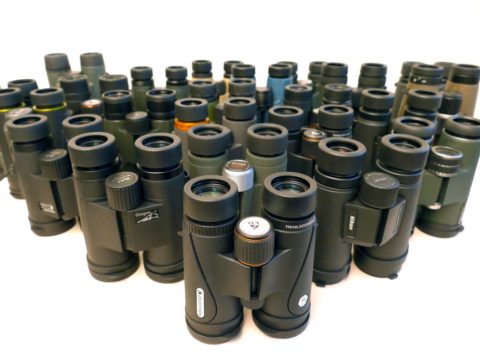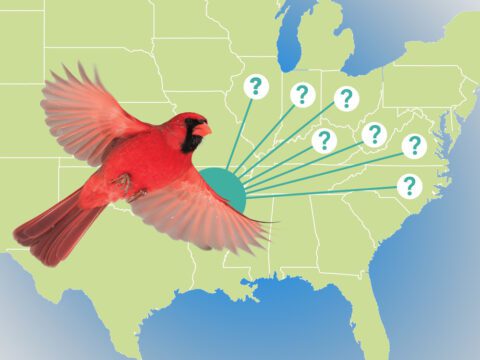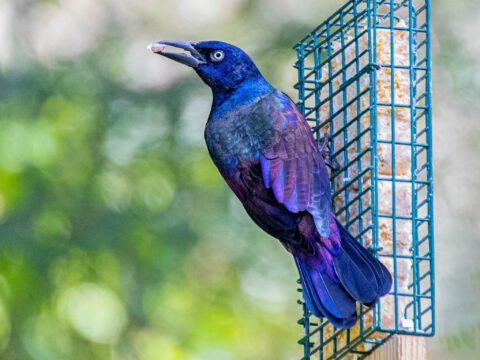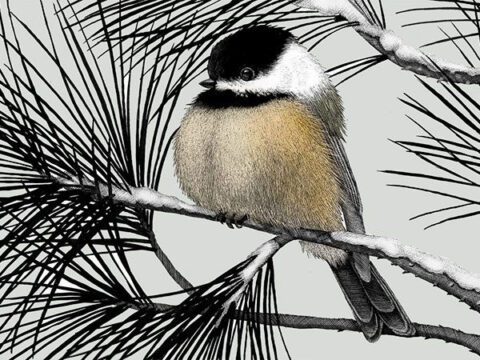On the Puffin Cliffs of Iceland’s Westman Islands [slideshow]
By Hugh Powell June 14, 2012
Iceland is home to nearly half of the world´s breeding Atlantic Puffins. 
The Westman Islands off the south coast hold about 830,000 pairs. 
Iceland is a land of majestic scenery, like this waterfall at Skogafoss. 
Graylag Geese survey lupine meadows near the coast. 
The Westman Islands are made of steep-sided volcanic rock. 
In the evenings, Atlantic Puffins gather in groups on the cliffs. 
Lucy Quinn and Nick Richardson use a burrow camera to check puffin nests. 
Erpur Hansen examines a puffin egg on the Westman Islands. 
Two sunlit Northern Fulmars shine against black basalt rocks. 
High atop the island, Common Eiders nest in the short grass. 
At another island, thousands of Northern Gannets can fill the sky. 
Common Murres by the thousands line Vestmannaeyjar´s tuff cliffs.
I’m spending 10 days in Iceland to learn about research on Atlantic Puffins. My host is Erpur Hansen, an Icelandic biologist who has been studying puffins here since 2007. He visits most of the country´s large puffin colonies twice each year to assess their breeding success. And that’s no small task, as nearly half of the world’s Atlantic Puffins breed on this small nation in the North Atlantic. The grass-topped cliffs and sea stacks that rise out of the ocean here are home to some 2.5 million breeding pairs.
We’ve started on Hansen’s home turf, the Westman Islands. Their Icelandic name, Vestmannaeyjar, has a mighty ring to it when you read it off the sterns of the fishing boats in the harbor. This string of islands off Iceland’s south coast mark where the Mid-Atlantic Ridge surfaces—where the North Atlantic and Eurasian plates meet like the seam on a baseball. Volcanic activity is high here, and the islands are towering cliffs of basalt and tuff, wave-worn at the base or, higher up, eroded into smooth fluting columns by rain and bird guano.
Above the sheer cliffs the islands slope toward their peaks. Here grass can get a foothold and turn the lava rock into soil. Puffins promptly turn this soil into burrows in which they lay their single egg each year, largely safe from predators. And so it is that you can walk along the cliffs and see hundreds of the little black-and-white birds looking out to sea, their sharp black backs, white chests, and impossibly brilliant bills gleaming in the sun. Out in the water, the white cheeks of thousands more puffins sparkle among the waves as the sun angles toward a leisurely sunset around 11:30 p.m.
These steep hillsides are the kind of place where you need to watch your step. I follow Hansen’s lead as we climb down the cliffs on a ladder bolted to the rock to reach a band of bright-green grass below. It’s hummocky—quite good footing, actually, and riddled with burrows. Every yard or two in any direction is a small earthen hole, just as big around as a puffin, that stretches back about 4 feet into the soil.
Though the burrows are easy to find, they hide the part that Hansen needs to know about: how many puffins have decided to breed this summer? The ones that have are nestled inside the burrows, well out of sight, with an egg tucked under a wing to keep it warm. To find out, Hansen has adopted a trick he learned from his friend Marino, a plumber and former puffin hunter. He pushes a stiff cable into the burrow with a lipstick camera and infrared light attached to the end. Then, wearing video goggles, he can watch a gray-and-white image of the burrow’s contents. If at the end of the burrow he sees the white cheek and curving bill of a puffin, he marks the burrow as occupied. He’ll return in late summer to see how many are still raising chicks.
Each burrow takes only a few minutes to check, but Hansen has a lot of burrows to get to. He’s interested in whether warming waters are changing the fish stocks around Iceland, particularly the small sandeels that feed many of the region’s seabird species. In most of southern Iceland there has been virtually no puffin breeding success since 2005. The little seabirds can live for 20 years or more, so their population size is still high, but Hansen worries that so many consecutive breeding failures mean fewer puffins in the future. And he wonders when—or if—the system will turn around and the sandeels will return.
The Icelandic Puffin Rally, as Hansen calls his two-week road trip, is a burrow-checking marathon. Hansen and his assistants, Ph.D. student Lucy Quinn from the University of Aberdeen, and marine ecologist Nick Richardson, will drive around the entire country clockwise, stopping in on most of the country’s colonies. I’ll be with them for about half of it, along with my photographer colleague Chris Linder.
Though we’re still getting started, we’ve already seen enough to be amazed by the sheer number of seabirds that nest along these coasts. Vestmannaeyjar is home to Iceland’s largest Atlantic Puffin, Northern Gannet, Northern Fulmar, Manx Shearwater, and Leach’s Storm-Petrel colonies. It’s also home to thousands of Common Murres, Black Guillemots, Black-legged Kittiwakes, and Razorbills. We’ve seen minke whales, harbor porpoises, and seals as well. That any of these species can exist in this frigid water or on these forbidding cliffs is a testament to the abilities of animals to adapt to harsh environments. Together, they’re a potent reminder that these cold northern seas can produce immense volumes of food for animals and people alike, if they stay healthy.
More coverage of puffin research in Iceland:
- Iceland Photos: Digiscoping Puffins With a Phone (slideshow)
- Peek Into a Puffin Burrow in Iceland (sounds and video)
(Photos by Chris Linder [see more of his photos]. Watch for the full puffin story to appear in Living Bird magazine in the coming year.)

All About Birds
is a free resource
Available for everyone,
funded by donors like you
American Kestrel by Blair Dudeck / Macaulay Library
















